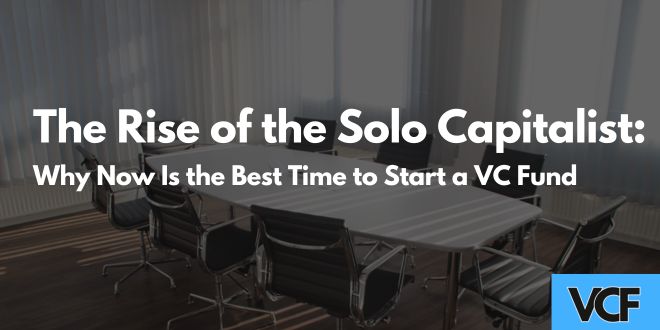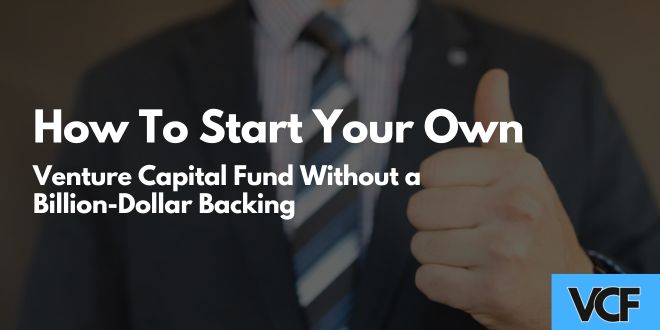If you’ve spent years shipping code, shepherding products, and negotiating term sheets, you’ve already rubbed shoulders with the world of Venture Capital Funding. You’ve watched partners glide in, pepper you with questions, and walk out owning a slice of your company—sometimes after a meeting shorter than your daily stand-up.
So the thought naturally creeps in: “Could I do what they do?” The answer is yes, especially at the micro-fund level (sub-$50 million). Below is a 30-day, boots-on-the-ground blueprint for turning your operator street cred into an investor’s first close. Is it aggressive? Absolutely. But if you treat the next month the way you treated your last product launch—focused, iterative, and ruthlessly honest—you can get there.
Day 1–7: Nail Your Thesis, Audience, and Advantages
Think of week one as writing the mission statement for a tiny spacecraft: small budget, no room for error, clear destination.
Define a Razor-Sharp Thesis
Generic promises like “investing in great founders” won’t cut it anymore. Instead, home in on unfair insight you earned as an operator: “$250k–$750k checks into seed-stage API infrastructure startups founded by repeat engineers solving internal tool fatigue.”
Map Your First-Call Network
Pull up a spreadsheet and list 50 people who would answer your text at 10 p.m.—former execs, early customers, friendly angels. They are your earliest believers and, in many cases, your initial limited partners (LPs).
Articulate Your Edge
Maybe you scaled a sales team from 0 to 100 reps in fintech. Maybe you built the go-to-market playbook for vertical SaaS. Whatever it is, tie that experience directly to how you’ll bend outcomes for portfolio companies.
Attach a Target Fund Size to Your Thesis
For micro funds, $10-$25 million is common. Smaller can work, but tiny funds (<$5 million) often struggle with management-fee starvation; larger vehicles require a fund-management track record you likely don’t have yet.
Checkpoint: By the end of Day 7 you should have a crisp one-pager laying out the thesis, check size, stage, geography, and unique advantage.
Day 8–14: Assemble The Legal And Administrative Backbone
Yes, week two is where glamour goes to die, but skipping paperwork is the fastest route to SEC nightmares.
Pick a Structure
In the U.S., the standard combo is a Delaware-registered Limited Partnership with you as the General Partner (GP). Internationally, work with counsel who understands cross-border capital and tax leakage.
Retain Counsel… Pragmatically
Big-law VC specialists are great, but their fees can rival your first investment. Many offer “deferred” packages—no payment until first close—which aligns incentives with your blitz timeline.
Draft Core Docs
Private Placement Memorandum (PPM), Limited Partnership Agreement (LPA), Subscription Agreement, and your GP/Management Company operating agreement.
Open Bank and Brokerage Accounts Early
KYC/AML compliance can eat a week if you wait until signature day.
Budget What You Actually Need
Typical micro-fund setup costs run $40k–$60k in the U.S. Ask counsel to stage invoices—20% on engagement, 30% at docs draft, balance at first close.
Checkpoint: By Day 14, you should have draft documents circulating for review and a clear view of setup expenses.
Day 15–21: Start the Quiet Yet Relentless Capital Sprint
You have a thesis and a legal shell; now you need money to inhabit it.
Warm Intros Only—For Now
Send an “I’m raising a first-time micro fund” teaser to the 50 names on that week-one spreadsheet. Include the one-pager and a Calendly link. Keep the pitch calls under 30 minutes.
Focus on “Believers,” Not “Validators”
Your ex-co-founder who made a small exit, the VP you promoted, the angel who led your seed round—these people trust you more than they need polished fund metrics.
Anchor First, Syndicate Later
Aim for one or two anchor LPs who will commit 10-20% of target fund size. Even a soft-circled anchor gives later LPs psychological cover.
Offer Friendly Economics
A typical micro-fund offers a 2% management fee and 20% carry, but you can sweeten early commitments with a “Founder’s Class”: 10% discount on carry if they sign their subscription docs before your 30-day clock hits zero.
Keep A Live Pipeline Tracker
Columns: LP name, check size, status (approached, in diligence, verbal, docs out, signed). Update it daily; momentum is oxygen.
Checkpoint: By the end of Day 21 you should have verbal commitments totaling at least 40% of your target. Less than that and you likely need to extend your timeline or shrink the fund.
Day 22–26: Finalize Docs and March Toward First Close
At this stage, details—wire instructions, signature blocks, tax IDs—matter more than your visionary origin story.
Lock In Compliance
File Form D (Rule 506b/506c) with the SEC if you’re in the U.S. International GPs: satisfy whatever regulatory filings your jurisdiction demands. Ignorance isn’t bliss; it’s a fine.
Execute Subscription Docs
Use electronic signature platforms with built-in KYC if possible; no one wants to print 80 pages.
Schedule a “Closing Date” Video Call
Invite counsel and all signed LPs. You’ll review remaining items and declare the fund officially open. The pomp is minimal, but hearing “congratulations” from witnesses makes the journey feel real.
Issue Capital Call #1
For a $15 million fund, a 25% initial call ($3.75 million) is common. Smaller draws win LP goodwill, but make sure the amount covers fund formation costs and leaves dry powder for your first two or three deals.
Send Thank-You Notes That Don’t Feel Canned
These people took a bet on you, often before you could legally prove anything. The personal touch today will matter when you’re back to raise Fund II.
Checkpoint: By Day 26, legal entities are alive, funds are wired (or at least in process), and you’re technically a GP.
Day 27–30: Public Launch and Deal Pipeline Jump-Start
Now that you have capital, it’s time to switch back into operator mode—sourcing, evaluating, and closing investments.
Craft a Launch Announcement
Keep it short—mission, fund size, and how founders can pitch. Push it on LinkedIn, Twitter, and any operator-heavy Slack communities you belong to.
Leverage Portfolio Founders You Already Know
Ask them to signal-boost your announcement. Founders trust other founders more than they trust investors—use that halo.
Build an Inbound Filter
Google Forms, Airtable, or a lightweight CRM can triage cold pitches so your inbox doesn’t implode.
Line Up Your First Deal
Ideally, you entered week four with a high-conviction opportunity in view. Closing a deal within 10 days of first close tells future LPs you can deploy capital intelligently and quickly.
Schedule Regular LP Updates From Day One
Even a one-page monthly note—pipeline, closed deals, and cash position—primes LPs for the transparency they’ll demand at scale.
Checkpoint: Day 30 ends with a live fund, an announced presence, at least one term sheet out, and your calendar booked with office hours for founders.
The 30-Day Mindset
Launching a micro VC fund in a month is less about hacking the process and more about compressing the feedback loop—much like shipping an MVP. You will make mistakes, chase dead-end LP conversations, and wonder more than once if “operator life” was actually easier. But the shift from building one company to empowering many is intoxicating, and your operator instincts—bias for action, empathy for founders, data-driven hustle—are exactly what the early-stage ecosystem needs.
Thirty days from now you could still be day-dreaming about cutting checks, or you could be wiring your first one. Sharpen your thesis, surround yourself with believers, and sprint. The founders you back—and the LPs betting on you—are waiting.







